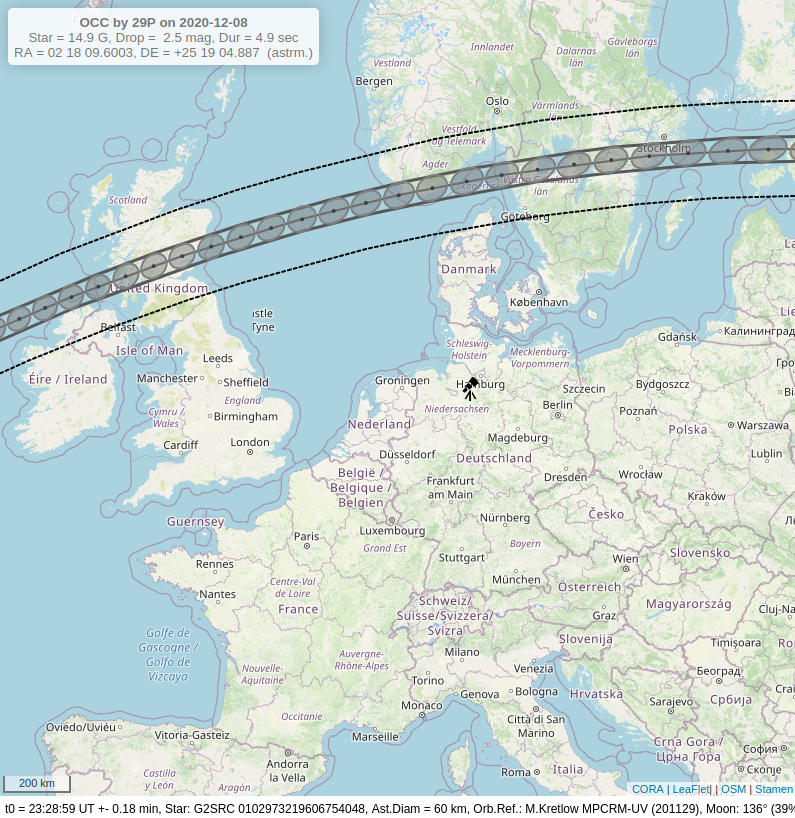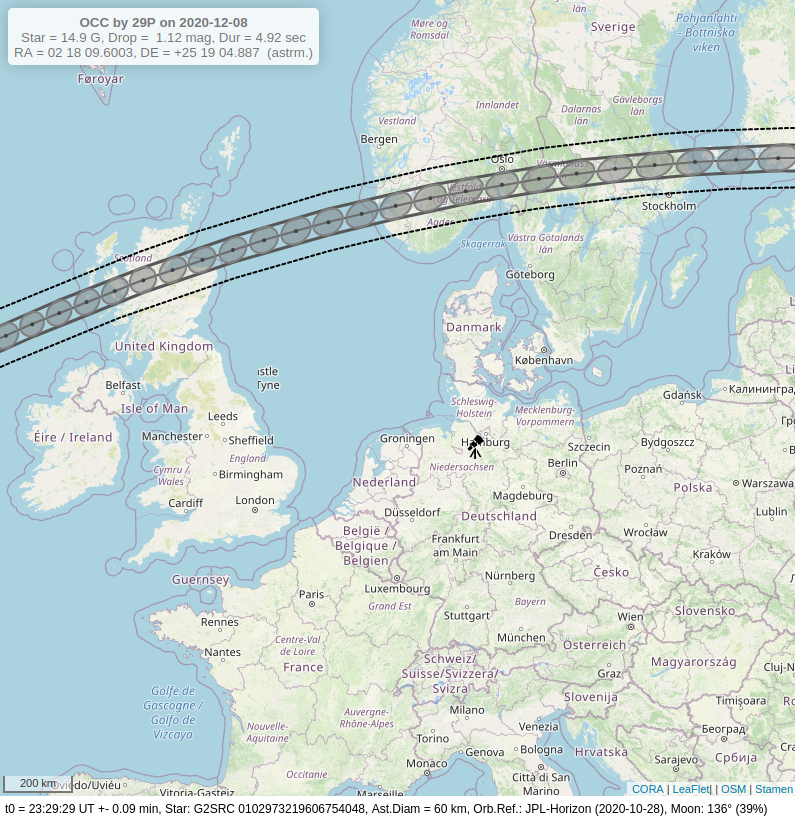Call for Observation
Occultation by Comet 29/P Schwassmann-Wachmann 1
Richard Miles reports:
In the late evening of Tuesday 8th December 2020, the 64-km nucleus of Comet 29P/Schwassmann-Wachmann 1, along with its inner coma, are predicted to occult a 14th magnitude star in the constellation Aries as seen from Russia, Finland, Sweden, Norway, UK and Ireland. The star will be favourably placed high in the moonless sky as seen from the UK.
The path crosses Scotland about 23:24 UT and so in this case (and for other parts of the UK) the recommended observing window is 23:21 to 23:27 UT. For Sweden, the times will be about 1 minute earlier.
The position of the magnitude 14.7R star involved is
R.A. 02h 18m 09.6s
Dec. +25° 19' 05".
The expected maximum duration of the occultation by the nucleus is 5.0 s but there is good reason to believe that secondary events involving a partial dimming of the star may also be seen if a debris disk or shell exists embedded within the inner coma. The most likely times for secondary events are within 60 seconds either side of closest approach. Similarly, observations from locations up to 1000 km or so from the nominal shadow track may detect partial dimming of the star.
As far as I know, this event will be the first opportunity to probe the 29P system by the occultation method. Telescopes of 25-cm aperture or larger (the larger the better) together with a sensitive integrating video camera are recommended. Alternatively if you wish to try using an integrating CCD or CMOS camera then the drift-scan method would be especially useful for detecting possible fades caused by debris shells or rings.
Importantly, 29P exhibits occasional strong outbursts and so the nucleus is usually embedded in a faint coma. Good seeing and good telescope focus will be important in detecting any changes in the intensity of the starlight throughout the long observing window. The last strong outburst of 29P was on November 25th and the pseudonucleus has been fading since that time. If no further outbursts happen over the next 8 days then we should be in for a fairly unobstructed view of the pseudonucleus of the comet.
Josselin Desmars of the Lucky Star Team (https://lesia.obspm.fr/lucky-star/index.php) and Mike Kretlow of CORA (Collaborative Occultation Research on Asteroids) have independently generated predictions for this event. Thank you both!
Mike's predictions are now available online, where you can click on the path dots and get information such as the predicted time in an info popup. See:
https://astro.kretlow.de/occpred/occ/342050/ (Mike's latest)
https://astro.kretlow.de/occpred/occ/342021/ (JPL-H)
Please report positive and negative observations to:
UKoccultations@groups.io
planoccult@ls.vvs.be
Clear skies all and good luck,
Richard Miles
BAA
Latest predictions
By Mike Kretlow (CORA)

By JPL-H

